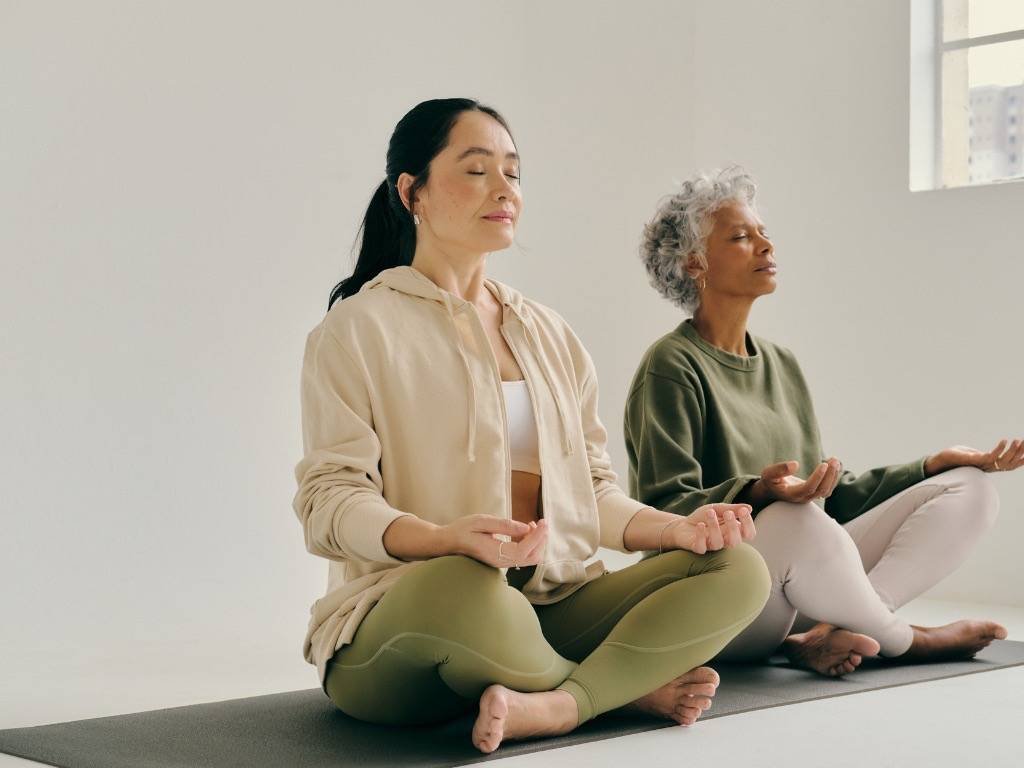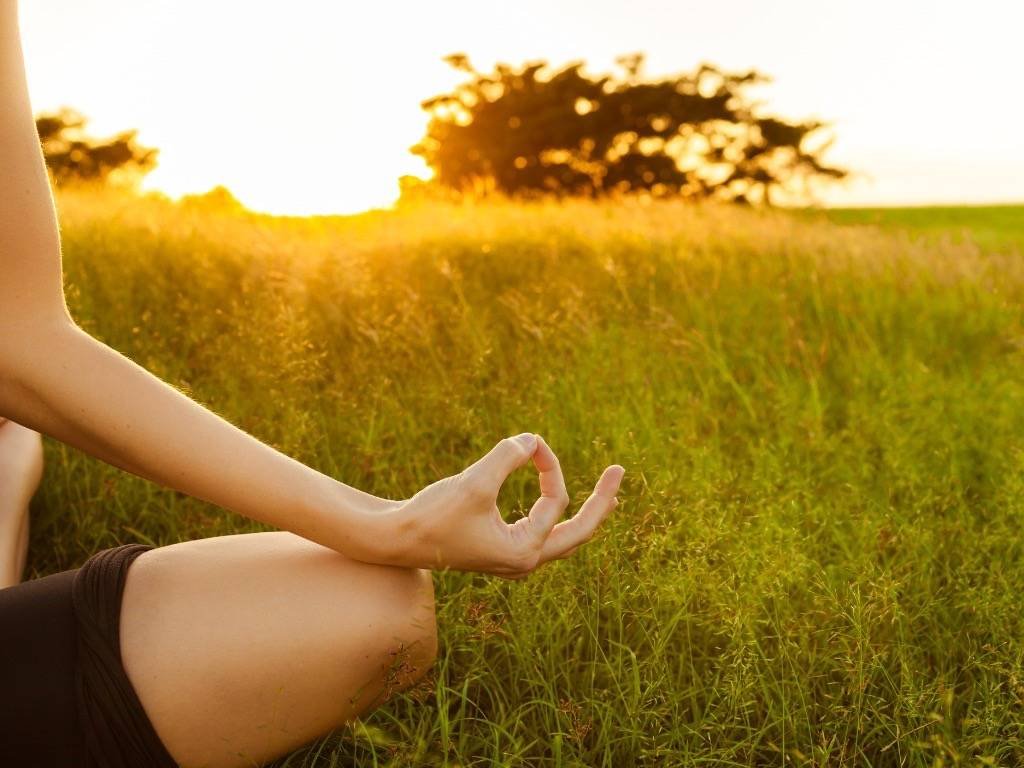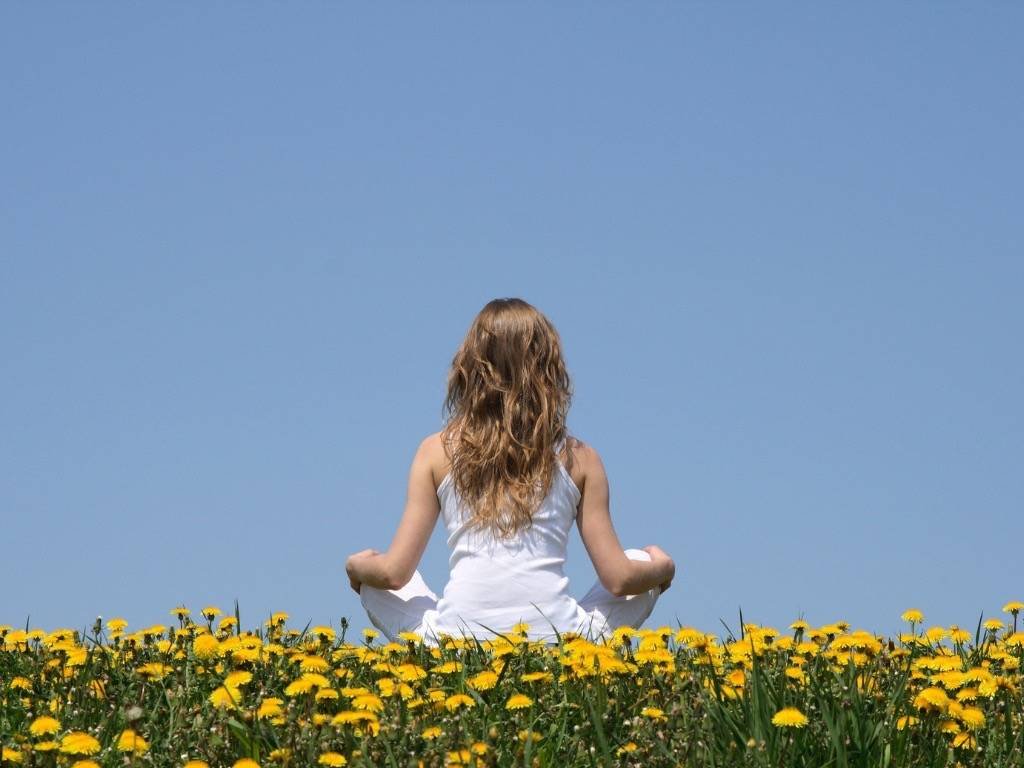Cultivate mindfulness in today’s fast-paced society to protect your inner peace, reduce stress, and improve your mental well-being. With just a few daily practices, you can stay present and thrive even in a busy world.
Can you truly thrive in today’s fast-paced society without losing your inner peace? The answer lies in embracing mindfulness, a practice that has gained significant attention in recent years.
In a world where distractions are constant, being present in the moment can be a powerful tool for achieving balance and harmony. As we navigate through our busy lives, it’s easy to get caught up in the hustle and bustle. Often, this comes at the cost of our mental and emotional well-being.

By incorporating simple yet effective mindfulness practices into our daily routines, we can learn to manage stress, improve our focus, and enhance our overall quality of life.
Key Takeaways
- Understanding the concept of mindfulness and its benefits
- Simple practices to incorporate mindfulness into daily life
- The importance of being present in a busy world
- Tips for managing stress through mindfulness
- Improving focus and productivity with mindfulness practices
Cultivate Mindfulness in Today’s Fast-Paced Society
In today’s fast world, knowing about mindfulness is key for our mental health. It helps us deal with stress and improve our life quality.
What Mindfulness Really Means
Mindfulness is more than just being present. It’s about being aware and accepting our thoughts, feelings, and body sensations. Mindfulness meditation helps focus the mind and cut down on judgment.
Understanding mindfulness helps us see its benefits. We can then use it in our daily lives.
The Mindfulness Paradox: Finding Stillness in Chaos
The modern world is fast and full of distractions. But, mindfulness helps us find calm in the chaos. Mindfulness practice lets us create calm spots in busy times. It helps us handle stress better.
A study showed mindfulness can lower stress and boost mental health. Here are some key findings:
| Mindfulness Practice | Stress Reduction | Mental Health Improvement |
|---|---|---|
| Regular Mindfulness Meditation | Significant Reduction | Notable Improvement |
| Occasional Mindfulness Practice | Some Reduction | Moderate Improvement |
As shown, adding mindfulness to our daily routine can greatly improve our stress and mental health.
The Science Behind Cultivate Mindfulness Practice
Cultivate mindfulness through regular mindfulness meditation to combine neurological benefits with psychological well-being. This ancient practice has been studied extensively in recent years and is now recognized as a proven way to boost both mental and physical health.

Neurological Benefits of Cultivating Mindfulness
Mindfulness changes the brain in good ways. It helps with attention, emotions, and memory. It also makes the brain more flexible, which is key for learning and remembering.
Regular mindfulness meditation can grow brain tissue. This improves thinking skills. It also lowers stress hormones, which reduces anxiety and stress.
Research-Backed Evidence for Cultivating Mindfulness
Many studies show mindfulness helps with anxiety and depression. It reduces stress and boosts well-being. It’s used in therapies like Mindfulness-Based Stress Reduction (MBSR) and Mindfulness-Based Cognitive Therapy (MBCT).
But mindfulness isn’t just for the mind. It also helps with physical health, like lowering blood pressure and managing pain. As more research comes in, mindfulness looks like a powerful tool for health.
Why We Need to Cultivate Mindfulness Now More Than Ever
In today’s fast world, mindfulness is key for our mental health. We face daily challenges like digital distractions and stress. A daily mindfulness practice helps us deal with these issues and live better.
The Digital Distraction Epidemic
Notifications, social media, and emails distract us all the time. This digital distraction epidemic hurts our productivity and mental health. Mindfulness keeps us focused and lowers anxiety from digital stuff.
- Constant notifications can lead to distraction and decreased focus.
- Mindfulness practice can help reduce digital-related stress.
- Regular mindfulness exercises improve mental clarity and focus.
Stress and Burnout in Modern Life
Modern life is filled with stress and burnout risks. A daily mindfulness practice can reduce stress and anxiety. It promotes relaxation and helps manage work and life better.
The Transformative Benefits of Mindfulness
Mindfulness can change your life for the better. It helps you stay calm and focused. This leads to a happier, more balanced life.
Starting with mindfulness meditation is easy. It can be part of your daily routine. It boosts your mental and physical health and improves how you connect with others.
Mental Health Improvements
Mindfulness helps with anxiety and depression. It teaches you to handle your emotions better. This makes you more resilient.
Anxiety and Stress Reduction
Mindfulness is great for lowering stress and anxiety. It teaches you to live in the moment. This helps you deal with stress better.
Depression Management
Mindfulness also helps with depression. It helps you understand your thoughts and feelings better. This makes it easier to get through tough times.
Physical Health Benefits
Mindfulness is good for your body too. It can help you sleep better and boost your immune system.
Improved Sleep Quality
Meditation and deep breathing improve sleep. They help you relax and reduce stress. This leads to better sleep.
Enhanced Immune Function
Regular mindfulness can make your immune system stronger. This means you’re less likely to get sick.
Enhanced Relationships and Social Connections
Mindfulness makes relationships better. It helps you understand and connect with others. This builds stronger, more meaningful bonds.
“The present moment is the only moment available to us, and it is the door to all moments.”
Thich Nhat Hanh

| Benefit | Description | Impact |
|---|---|---|
| Mental Health Improvements | Reduces symptoms of anxiety and depression | Improved emotional regulation and resilience |
| Physical Health Benefits | Improves sleep quality and immune function | Better overall health and well-being |
| Enhanced Relationships | Promotes empathy and effective communication | Stronger, more meaningful connections |
Common Obstacles to Mindfulness Practice
Mindfulness practice faces many challenges. In today’s world, finding time for it can be tough. Understanding what mindfulness is can also be a hurdle.
Time Constraints and Busy Schedules
Many people think they don’t have time for mindfulness. They’re busy with work, family, and friends. But, mindfulness can be done in short periods. Even a few deep breaths or mindful walking can help.
Misconceptions About Mindfulness
Some people think mindfulness is only for those with lots of free time. They also believe it’s just about meditation.
It’s Not Just About Meditation
Mindfulness is more than meditation. It can be part of daily activities like eating or walking. Seeing it this way makes it more reachable.
You Don’t Need Hours of Practice
Another myth is that you need hours for mindfulness. But, even a few minutes a day can help. Starting small and being regular is better than long, irregular sessions.
Essential Mindfulness Techniques for Beginners
Starting with simple mindfulness techniques is key for beginners. Mindfulness helps us stay in the present moment. There are many techniques to help you do this.
Mindful Breathing Exercises
Mindful breathing is a basic technique. It focuses on the breath to calm the mind and body. There are two main methods:
The 4-7-8 Breathing Technique
This method involves breathing in through the nose for 4 counts. Hold the breath for 7 counts, then exhale through the mouth for 8 counts. It’s great for reducing stress and promoting relaxation.
Box Breathing Method
Box breathing is about breathing in for 4 counts, holding for 4 counts, exhaling for 4 counts, and holding again for 4 counts. It helps balance and calm the mind.
Body Scan Meditation
Body scan meditation is done by lying down or sitting comfortably. Focus on each body part, starting from the toes and moving up to the head. It helps release tension and promotes relaxation.
Mindful Observation Practice
Mindful observation is about focusing on an object, like a flower or candle flame, without distraction. The goal is to observe it as it is, without judgment. It helps cultivate mindfulness and presence.
| Technique | Description | Benefits |
|---|---|---|
| Mindful Breathing | Focusing on the breath | Reduces stress, promotes relaxation |
| Body Scan Meditation | Awareness of body parts | Releases physical tension |
| Mindful Observation | Focusing on an object | Cultivates mindfulness and presence |
How to Cultivate Mindfulness in Daily Activities
Daily activities are full of chances to practice mindfulness. By adding mindfulness to our daily life, we can boost our mental and physical health. This leads to a more balanced life.
Mindful Eating Practices
Mindful eating means focusing on the act of eating. It’s about noticing the food’s colors, smells, textures, and tastes. Chew slowly and enjoy each bite.
Eat without distractions like TV or phones. Pay attention to how the food feels in your mouth and the sounds you make while eating.
Mindful Walking and Movement
Mindful walking is about paying attention to your steps. Notice how your feet touch the ground and the movement of your legs. It’s a way to be mindful while exercising.
You can also be mindful in other activities like yoga or tai chi. Focus on the sensations in your body and your breath.
Mindfulness During Routine Tasks
Even routine tasks like showering or commuting can be mindful. The key is to focus on the sensations and sights around you.
Mindful Showering
When showering, notice the water’s feel on your skin and its temperature. Pay attention to the smell of your soap or shampoo.
Mindful Commuting
Be present during your commute. Notice the sights and sounds, the feeling of sitting or standing, and your breath. Use this time for deep breathing exercises.
| Activity | Mindfulness Practice | Benefits |
|---|---|---|
| Eating | Notice colors, smells, textures, and flavors; chew slowly | Better digestion, enjoyment of food |
| Walking | Pay attention to footsteps, movement of legs, and breath | Reduced stress, improved balance |
| Showering | Notice water sensation, temperature, and sounds | Relaxation, reduced stress |
By adding mindfulness to daily activities, we can stay present every day. This improves our life quality. Regular mindfulness practice makes our daily life more mindful and fulfilling.
Integrating Mindfulness into Your Workday
In today’s fast-paced work environment, adding mindfulness can really help. It can make you less stressed and more productive. Just a few moments each day can make a big difference in managing work pressures.
Micro-Meditation Breaks
Micro-meditation breaks are a great way to bring mindfulness into your day. Short breaks to focus on breathing or simple meditation can reduce stress and anxiety. Even just a minute or two can make a big impact.
Mindful Communication with Colleagues
Mindful communication means being fully present when talking to colleagues. It’s about listening well and responding thoughtfully, not just reacting. This can lead to better teamwork and fewer misunderstandings.
Creating a Mindful Workspace
Creating a mindful workspace means setting up a calm and focused area. This can include plants, calming colors, or a quiet spot for meditation. A well-designed space can support mindfulness meditation and improve well-being.
By adding these mindfulness practices to your workday, you can make your work environment better. As “The mind is everything; what you think, you become.” – Buddha. This shows how important mindfulness is in our daily lives, especially at work.
Technology and Apps to Support Your Mindfulness Journey
Digital tools can be a big help in our busy lives. Mindfulness apps and platforms make it easy to add meditation to our day. This helps us stay focused and calm.
Top Mindfulness Meditation Apps
Apps like Headspace and Calm are very popular. They offer guided meditations for all levels. These apps help you start and keep up with a mindfulness routine.
Digital Tools for Tracking Your Practice
There are also tools to track your progress. Many apps let you log your meditations and set reminders. This helps you stay on track, even when it’s hard.
Using these digital tools can make mindfulness easier. It helps you fit meditation into your everyday life.
Building a Sustainable Mindfulness Practice
Mindfulness is a long-term investment in your well-being, not a quick fix. It’s about making a commitment to your health and happiness.
Creating a Realistic Routine
To start a daily mindfulness practice, make a routine that fits your life. Begin with just a few minutes each day. Try mindful breathing or body scan meditation.
As you get more comfortable, you can add more time to your practice.
Overcoming Practice Plateaus
It’s normal to feel like you’re not improving in mindfulness. To get past this, mix up your practice. Try mindful walking or loving-kindness meditation.
Jon Kabat-Zinn said, “You can’t stop the waves, but you can learn to surf.” This means you can adapt to challenges.
“You can’t stop the waves, but you can learn to surf.” – Jon Kabat-Zinn
Finding Community Support
Being part of a community can really help your mindfulness. Look for local groups or online forums. Share your journey and learn from others.
This support can keep you going with your practice.
By using these tips, you can make mindfulness a lasting part of your life.
Conclusion: Embracing Mindfulness as a Lifelong Journey
Living in today’s world, mindfulness is more important than ever. By adding mindfulness meditation to our daily lives, we can stay present, even when things get busy. It’s not about reaching a goal but about enjoying the moment with kindness and curiosity.
Mindfulness brings many benefits, like better mental and physical health and stronger relationships. By making mindfulness a part of our daily tasks, work, and tech use, we can live a more balanced and happy life. The secret is to be consistent and patient, letting our practice grow and deepen.
Keep going on your mindfulness path, knowing it’s a journey, not a finish line. With regular practice, you’ll get better at staying present every day. This journey is a chance for personal growth, well-being, and a deeper connection with ourselves and the world.
FAQ
What is mindfulness meditation?
Mindfulness meditation is about focusing on the present moment. It helps you notice your thoughts, feelings, and body without judgment.
How do I start a mindfulness practice?
Start by setting aside a few minutes each day. Focus on your breath, body, or emotions. Use guided meditations or exercises to help you begin.
What are the benefits of mindfulness meditation?
Mindfulness meditation can reduce stress and anxiety. It improves mental clarity and focus. It also helps with emotional regulation and overall well-being.
Can I practice mindfulness in a busy world?
Yes, you can practice mindfulness anywhere. Even in a busy world, you can use mindfulness in daily activities. This helps you stay present and focused.
How can I overcome common obstacles to mindfulness practice?
To overcome obstacles, start with realistic goals. Be consistent and find a community or resources that support you. Be patient as you develop your practice.
What are some essential mindfulness techniques for beginners?
Beginners should try mindful breathing, body scan meditation, and mindful observation. These techniques help cultivate awareness and calm in daily life.
How can I integrate mindfulness into my daily activities?
Integrate mindfulness by practicing mindful eating, walking, or showering. Use mindfulness techniques to stay present and focused during routine tasks.
Can mindfulness help with stress and anxiety?
Yes, mindfulness can reduce stress and anxiety. It promotes relaxation, improves emotional regulation, and enhances overall well-being.
How can I track my mindfulness practice?
Use digital tools like mindfulness apps, journals, or spreadsheets to track your practice. This helps you stay consistent and monitor your progress.
What are some top mindfulness meditation apps?
Top mindfulness apps include Headspace, Calm, and Insight Timer. They offer guided meditations, tracking features, and resources to support your practice.






